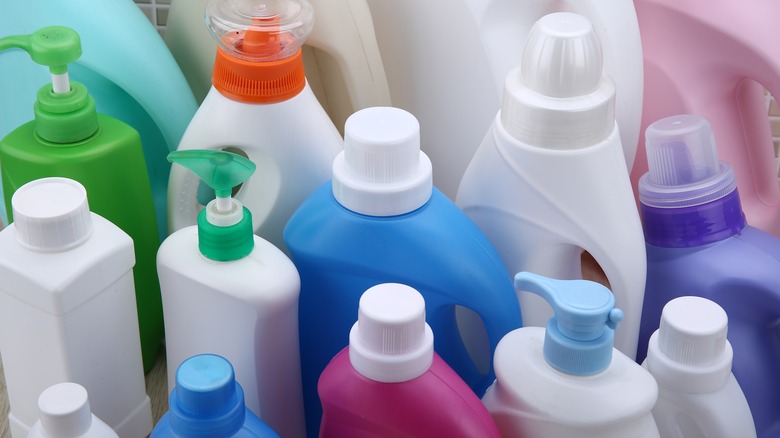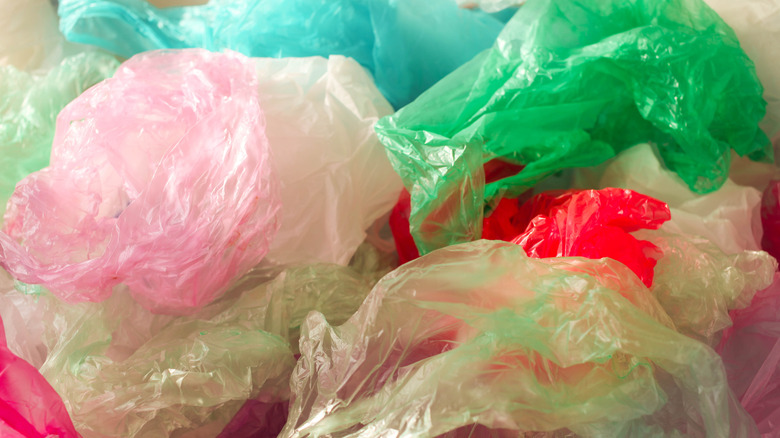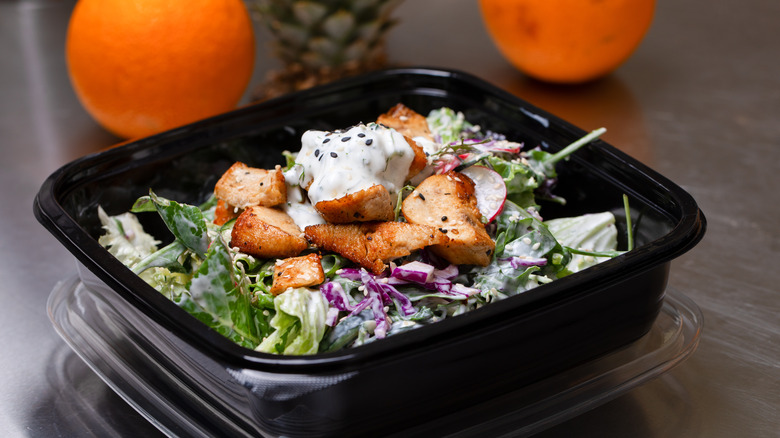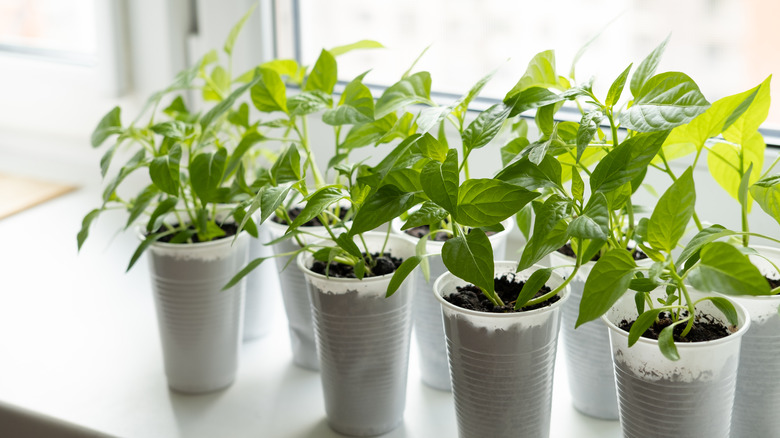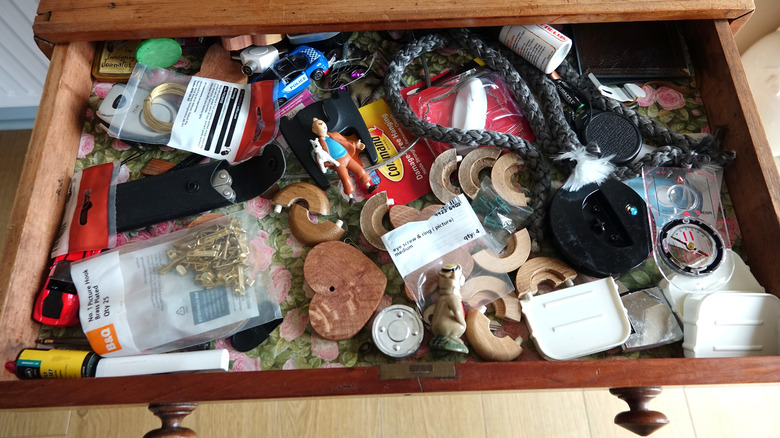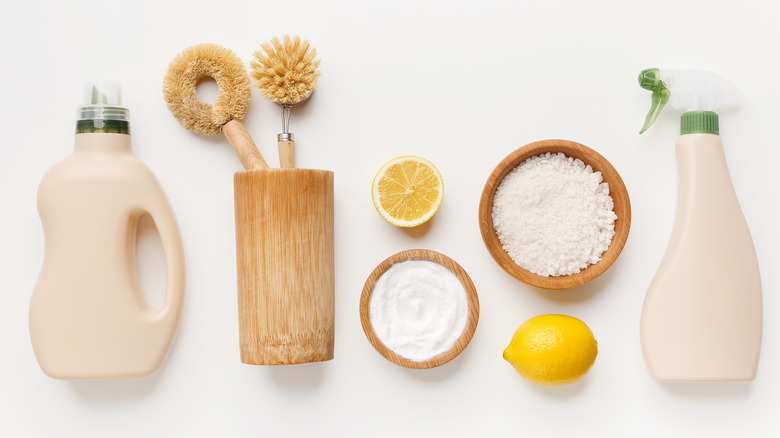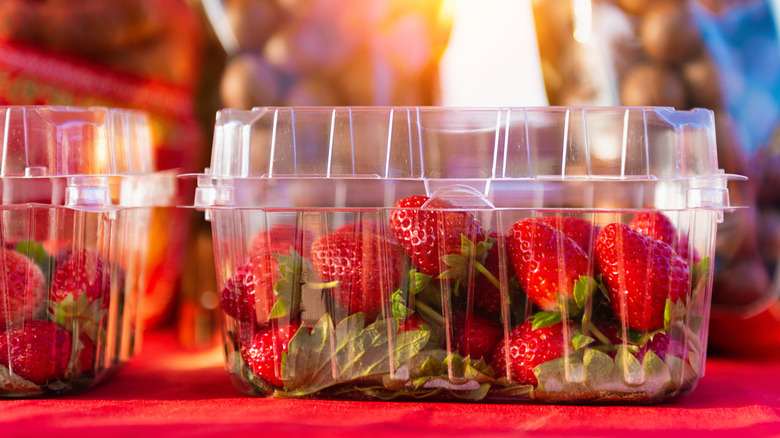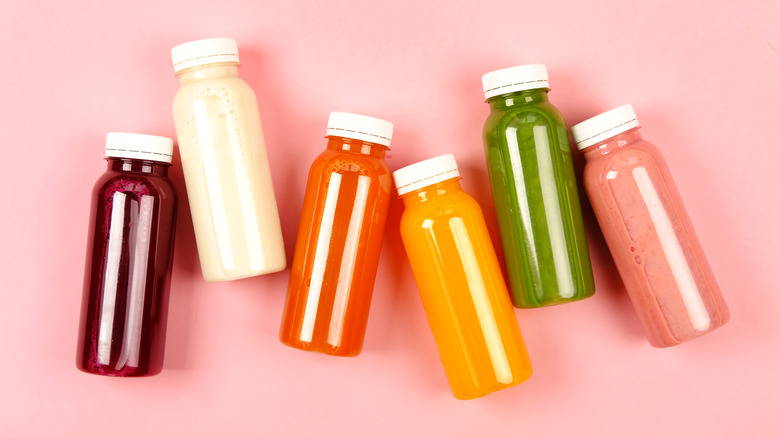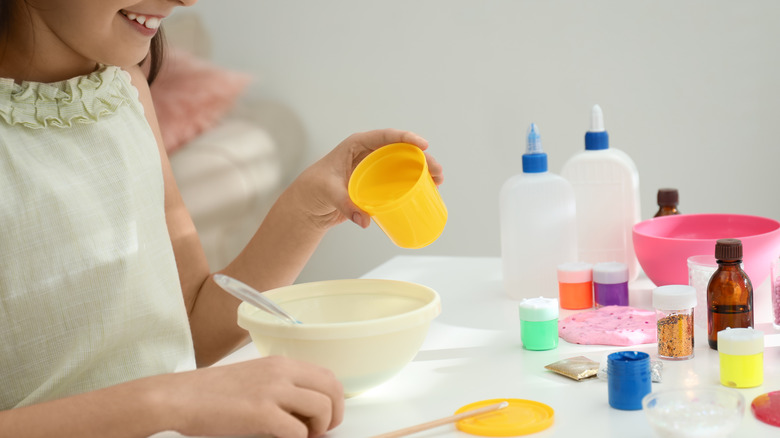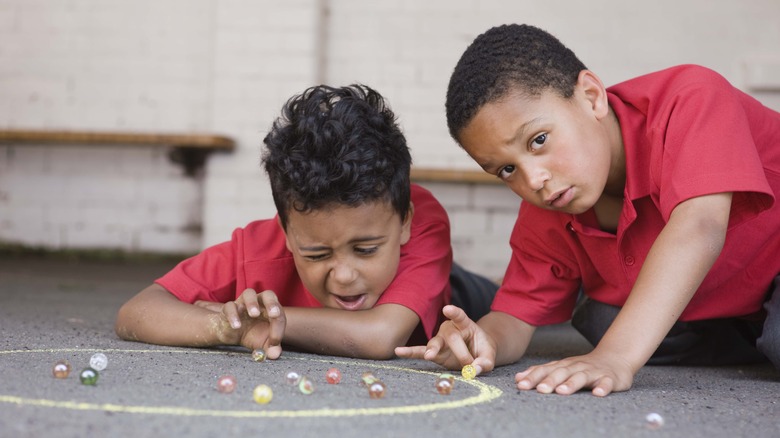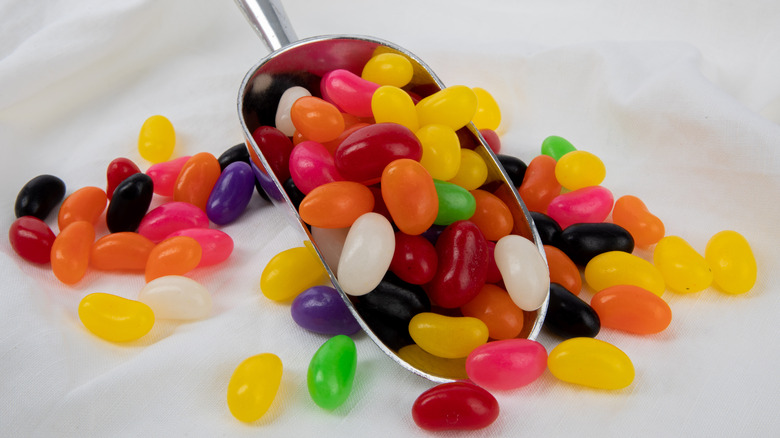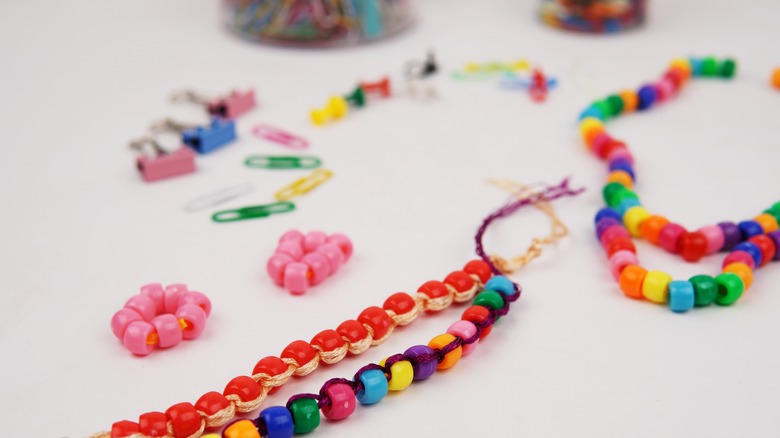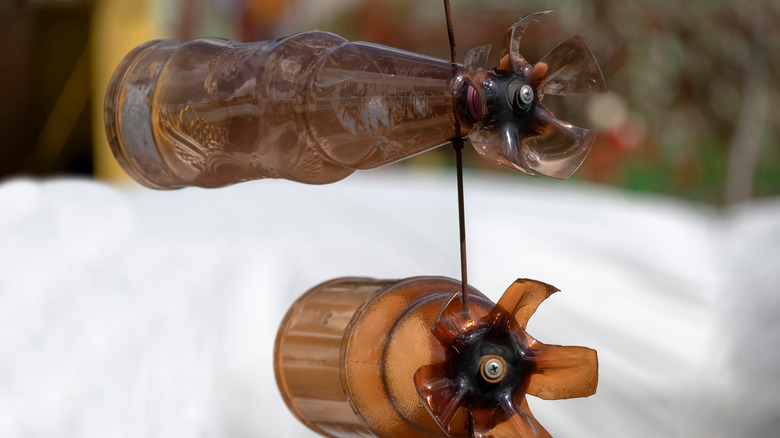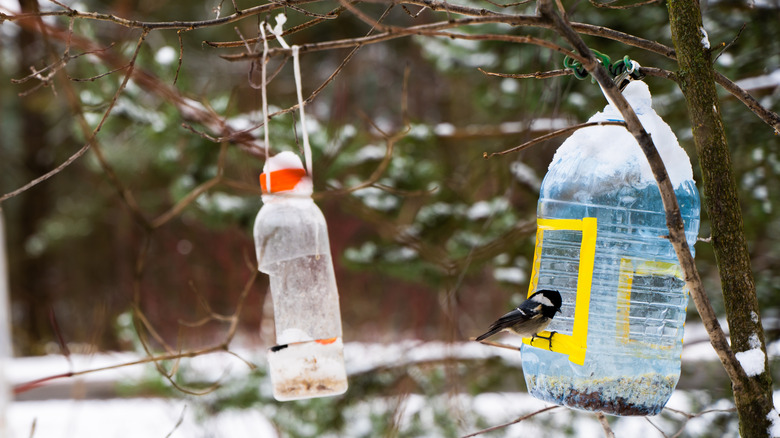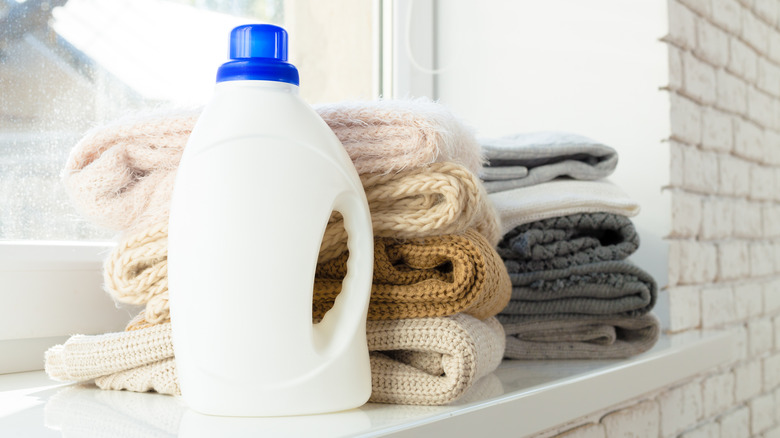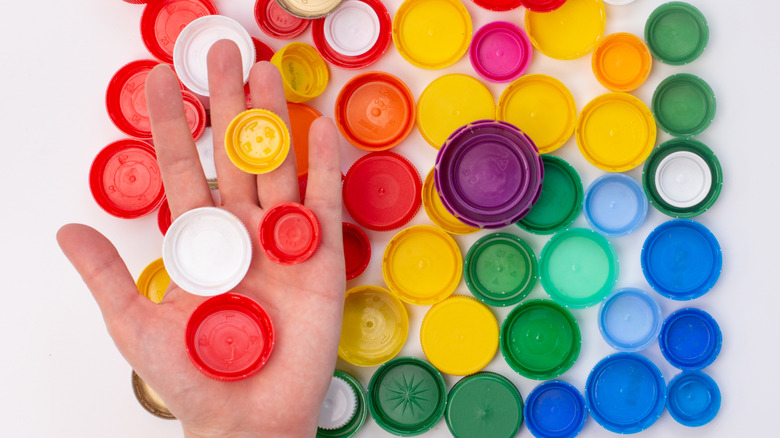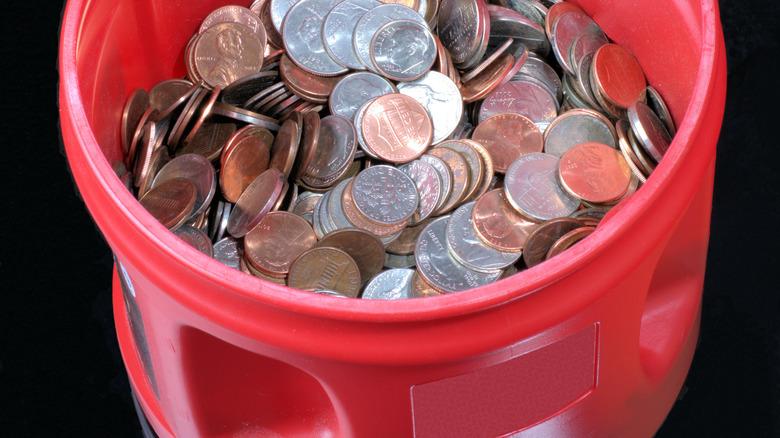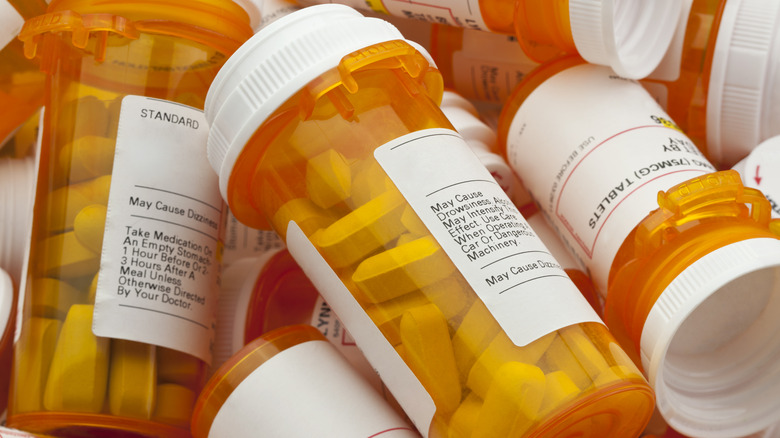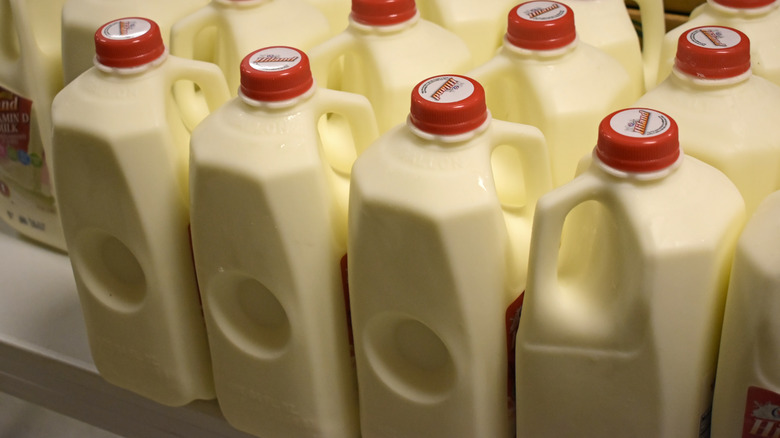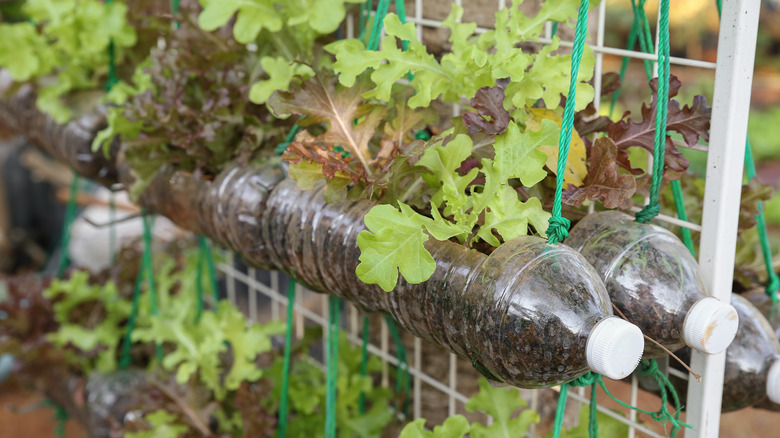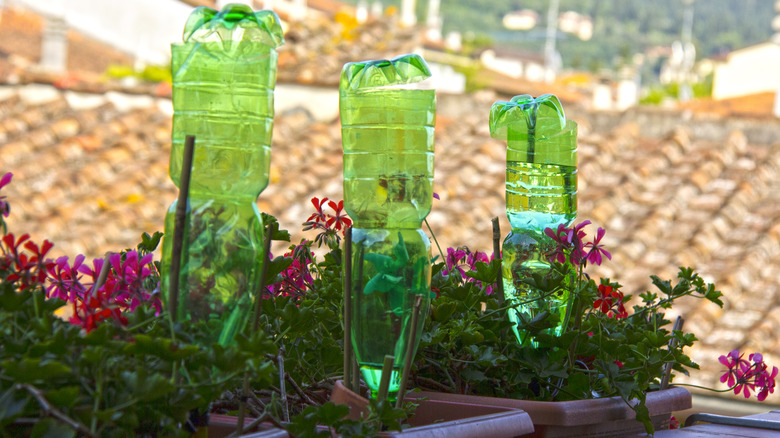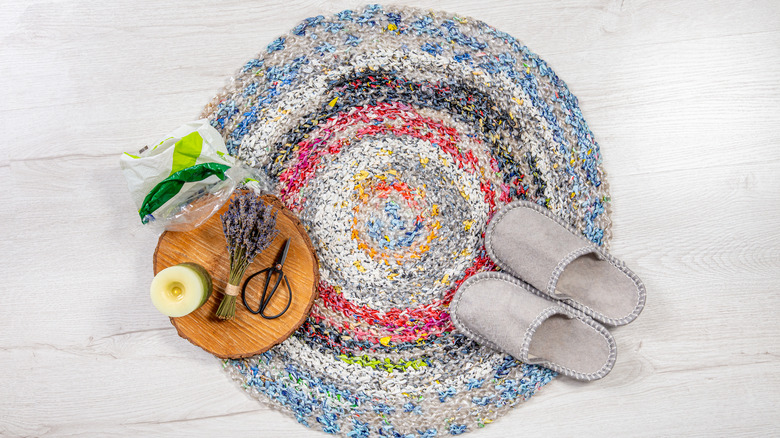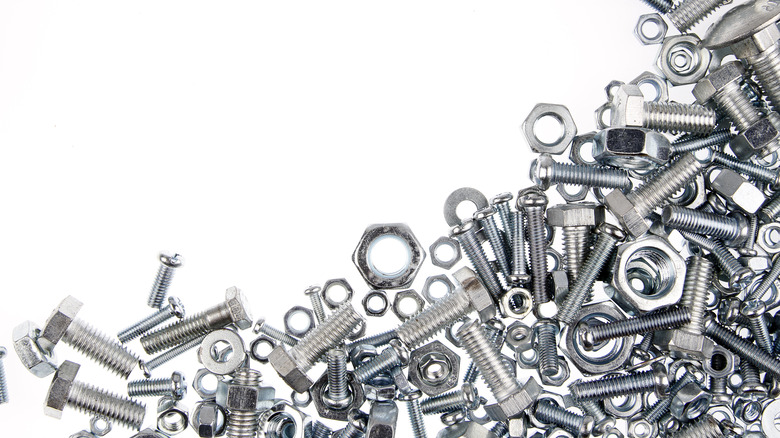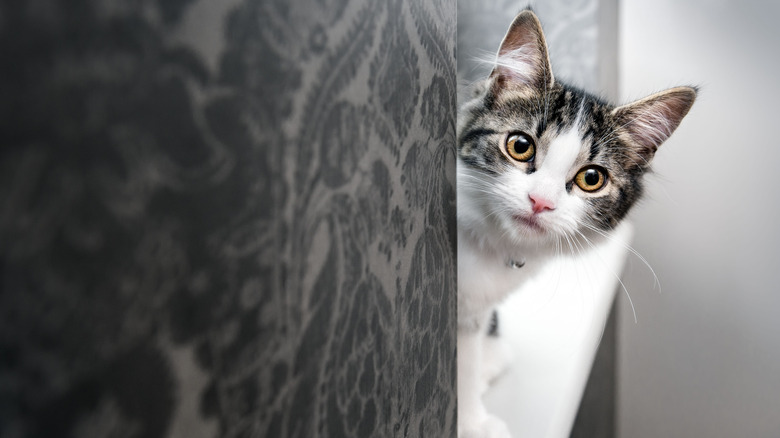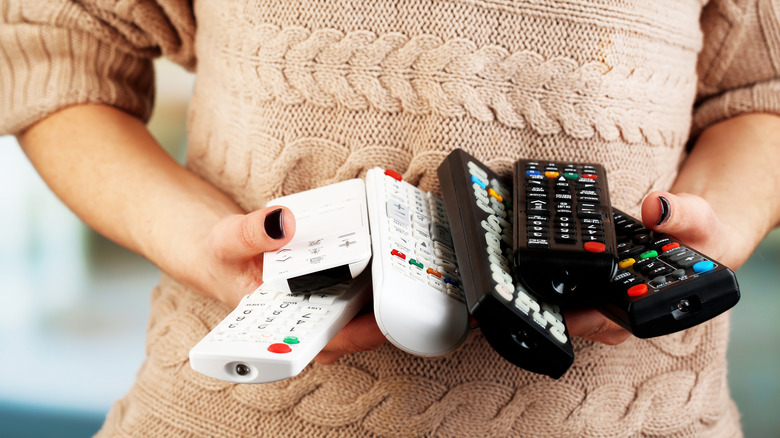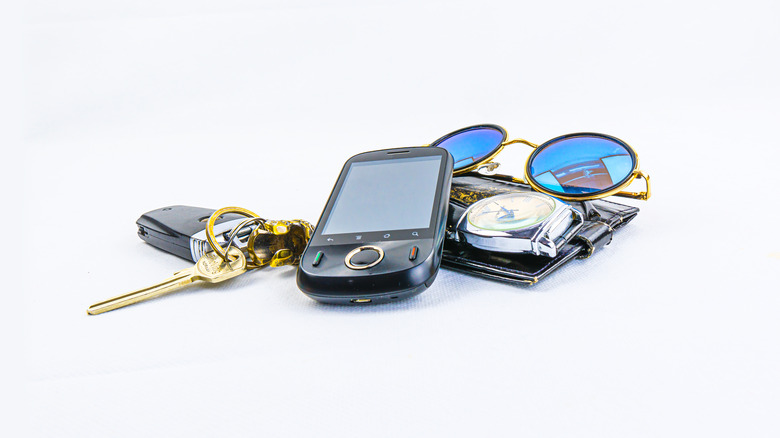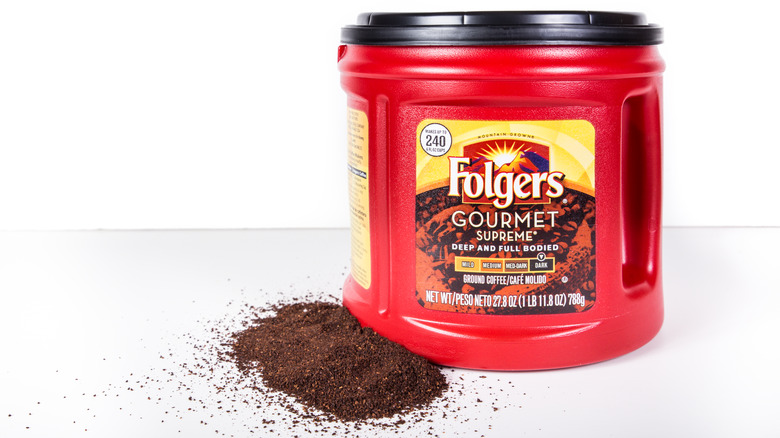26 Clever Ways To Reuse Your Plastic Containers In Your Home And Garden
Plastic is an everyday part of life and, worldwide, we discard 400 million metric tons of it yearly, reports The Roundup. Less than 20% of plastics are collected for recycling and what doesn't end up in landfills finds its way into our oceans. It isn't the plastic to which we are addicted but the convenience it creates. According to EarthDay.org, 160,000 plastic bags are used per second across the globe, Americans slurp through half a billion plastic straws daily, and enough bubble wrap is made around the world annually that it could stretch from Earth to the moon. That's a lot of plastic ... but there are little things each of us can do to help reduce the demand for newly manufactured plastic. Instead of throwing away single-use containers, give them a second life as something useful around your house.
Before you begin reusing plastics, it's a good idea to learn about the different types and their safety. Plastic is assigned a number (1 to 7) which can be found imprinted on the bottom of the item. Everything Bags Inc. explains that the number correlates to the composition and recyclability of the material, and says that plastics encoded with a 3, 6, or 7 are the ones to skip when considering repurposing. Wash plastics 1, 2, or 5 well with warm soapy water and get creative with how they can be used next. We have 26 ideas to get you started.
Plastic bag dispenser
Plastic wet wipe containers make a fantastic solution for storing and dispensing all of those loose plastic grocery bags that inevitably become clutter in the pantry or under the kitchen sink. Per Infarrantly Creative, you can interlock the bags so they pull through the top hole like a chain.
Leftover food storage
Plastic takeout containers are a food safe and economical option for storing leftovers. The clear lids make it easy to see what's inside and they're stackable, so your fridge can stay tidy. Plus, these are the best no-fuss containers to send food home with guests after a party or gathering.
Kitchen herb garden
Disposable cups, yogurt containers, and other small plastic dishes make great starter pots for growing fresh herbs in your kitchen. Pick your seeds and soil, fill the cup, and add sunshine and water; you'll have savory herbs ready to snip in no time.
Junk drawer organizers
Junk drawers have a way of getting out of control, but by using leftover plastic containers in a variety of sizes, the clutter can be tamed. Keep the lids so loose items can be sealed away, and remember to label the containers. You may find this to be a helpful solution for other drawers in your house too.
Bottled homemade cleaners
If you're into natural cleaning products and want to try making your own, you'll need bottles to store them in. For liquid concoctions, you might consider a bottle that sprays with a trigger, or one that pours or squeezes. Make sure you've thoroughly washed your bottle before filling it with your DIY cleaner.
No-squish food transporters
Packing lunches and fitting in all the goods without squishing delicate items like sandwiches and berries can be challenging. Try reusing berry containers to shelter these softer items in the lunch bag. They're lightweight and easy to clean as well.
Touch-up paint bottles
Store-bought smoothies are delicious, but you know what makes them even better? Their containers. These little plastic bottles are leak-proof, which makes them perfect for storing a little leftover paint to touch-up areas that get scratched or damaged. Be sure to label the bottle with the color and room that is painted that shade.
Childhood craft projects
Kids love crafts. There's no need to buy containers for their crafting needs; simply save old plastic cups and bowls for use in their creative play. Whether you use them as part of the project or to organize all the loose bits, these containers make cleanup easy and crafting more fun.
Toy organization
Every playroom has a ton of toys with small parts that can quickly become a mess if not organized properly. You can buy expensive bins and organizers, but a budget-friendly option is to round up your leftover plastic food containers that have lids and fill them with all of those small playroom items.
Snack portioning
If you buy in bulk or prefer family-size packages of food, it can be helpful to break those items into pre-portioned servings. Save those empty lidded plastic containers from margarine, sour cream, and yogurt for re-use as portion cups. They stack nicely in the fridge or pantry. Just make sure they're labeled accordingly and you're good to go.
Craft room storage
A well-stocked craft room will be a challenge to organize without the help of many containers in a variety of sizes. From pretzel canisters to spice bottles, those empty plastic containers will be put to good use in this room, so be sure to save them all.
Garden mole repeller
Moles are bad news for gardens. They burrow underground, creating tunnels that damage plants, and the mounds they leave behind are unsightly. Luckily, there's a safe alternative to chemical deterrents — a mole repeller that can easily be made out of a plastic bottle, notes Big Bad Mole.
Homemade bird feeder
You may want to repel moles, but what about inviting birds? Whether big or small, almost any plastic bottle can be turned into a bird feeder. The birds won't mind if it isn't pretty. You'll need to cut a hole in the bottle and attach it to a tree branch or other secure spot, explains PBS.
Simple watering can
A laundry jug (with its built-in handle) is a perfect watering can for your plants. Make sure you've thoroughly cleaned the jug before using it to water your plants because soap can be toxic to plants. Once the jug is clean, punch multiple holes in the lid to allow water to slowly pour out. Voilà!
Creative designs
Plastic caps come in all colors and sizes, which means they can be a great medium for artistic expression. Whether you apply them to canvas or wood, or build a unique structure with them, plastic bottle caps can make any art project tantalizing to the eyes, notes Lushome.
Rainy day savings
Loose change ends up in our pockets, drawers, cars, couches, and purses. Eventually it gets taken to the change sorter at the bank. But what if we saved it for a special occasion? Imagine how much loose change you could collect in a year! Better use an empty paint gallon or a coffee tub for this one!
Mini travel containers
Before you throw away those empty prescription bottles, you might want to think about using them the next time you travel. They're ideal for filling with creamy or liquid hygiene products when flying. They're also just the right size for holding loose jewelry. At home, you can store pins and other small items safely away.
Sturdy scoopers
Most milk jugs are made from sturdy high-density polyethylene plastic, which makes them handy for turning into large scoopers. With the help of a few tools, you can quickly make a set of food-safe scoopers to use at home or in the garden, explains Project Diaries (via YouTube).
Vertical garden
When space is limited, vertical is the way to go. Reusing single-serving water or soda bottles is an easy way to create an upwards garden. Bottles can be cut on their sides (as pictured above) or cut in half with the bottom portion saved for use as the container.
Garden drip irrigation
Drip irrigation is a method of watering plants that is efficient and effective. The water is slowly delivered to the soil and roots of the plants. In a Bottle explains that a simple drip irrigation system can be made from cutting the bottoms off of bottles and making a few holes in each cap.
Woven rug
Ever wonder what to do with all of those extra plastic grocery store bags? Here's an idea — get crafty with them by weaving them together into a purse or rug. These projects take hundreds of bags, so make sure you have plenty on hand before you start, notes Instructables.
A place for hardware
Every garage has tons of loose nuts, bolts, nails, screws, and such. It's easy (and messy) to dump them into an old can or drawer, but this can be problematic. Avoid future stress by separating these items into old food storage bowls with lids. They'll stay tidy and you'll find everything with ease.
Cat training tool
It's sometimes necessary to train cats to stay off counters or out of forbidden areas. An effective training method involves filling a small plastic container (such as an old parmesan cheese canister or empty plastic spice jar) with coins. Shake the bottle vigorously when the cat needs redirection. It will associate the unpleasant noise with the action.
TV clutter control
If your household has multiple remote controls for the living room electronics, you might grow tired of looking for them. Having a place to store them when not in use might solve the problem. Using an empty plastic coffee can or larger disposable food tray can be an inexpensive way to corral your remotes.
Front entry catch-all
Keys, sunglasses, and random objects often end up in a cluttered heap on the first hard surface nearest the front door. You can fix this unsightly mess by placing one or more plastic bowls (those plain black ones used for mashed potatoes and such work well) in the area to collect these items as they accumulate.
Leftover paint storage
If you're an avid coffee drinker, you may have an abundance of empty canisters. Instead of throwing these out, save them to use for storing leftover paint. Folgers Coffee containers work particularly well for storing paint. Their handles and twist-off lids make them easy to hold and carry and simple to open and shut. Pouring leftover paint from a project into them can help you minimize messes. Using these containers can also be especially helpful if you mix colors and don't want to pour the combination back into the original cans.
If you want to use your Folgers cans to store paint, start by washing and drying them to remove any coffee grounds — you don't want to end up with flecks of coffee on your freshly painted walls or DIY projects. Then, pour in the paint you wish to store and place a layer of plastic wrap over the top before putting the lid back on. Doing so will help keep the paint inside from drying out between uses. You can even store the canister in the refrigerator if you plan to use the paint in the near future to finish up a project.
